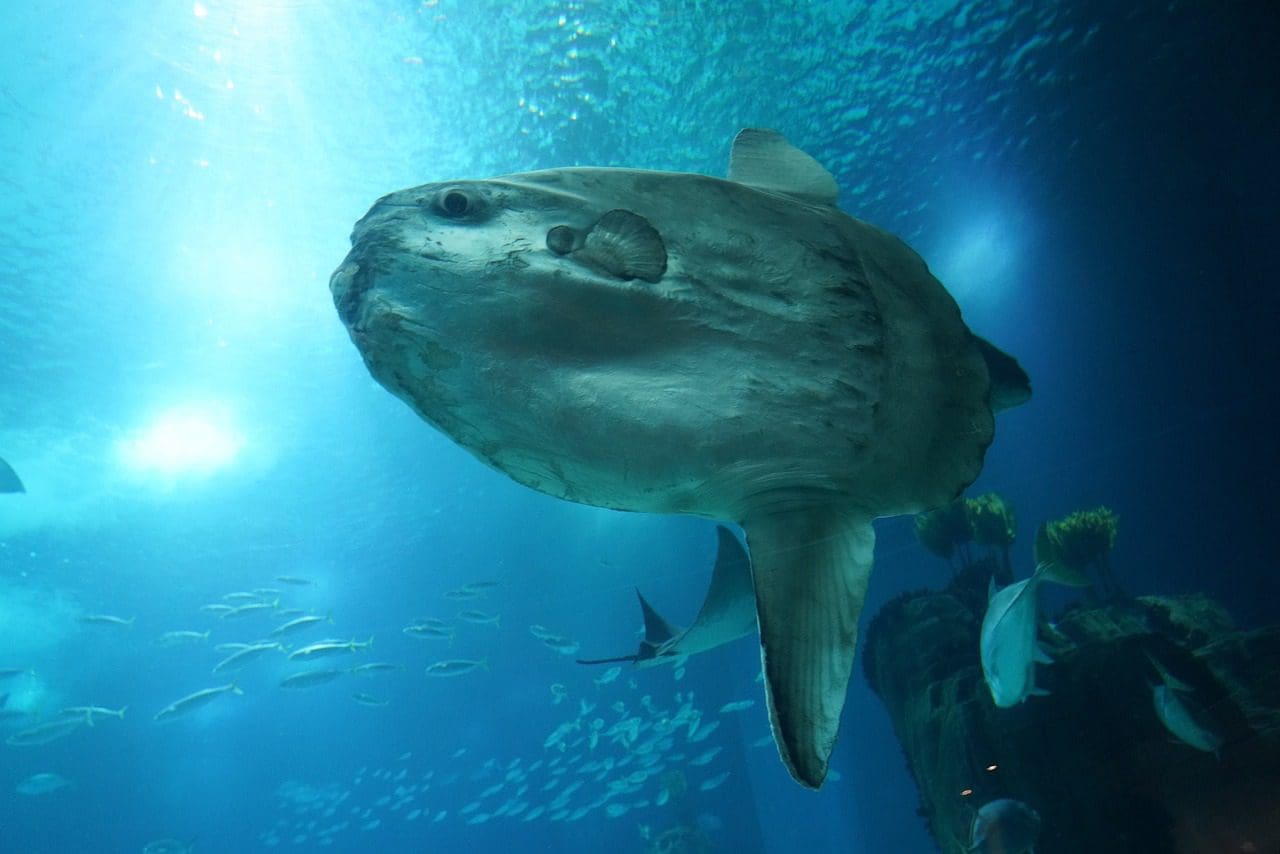The oceans provide thousands and thousands of fish. The different varieties of fish are not even known to mankind to date. But also, there are some varieties which are widely consumed.
Among these are the Sunfish and Bluegill fish. Sunfish and bluegill fishes are found abundantly in the sub-continents of North America.
Key Takeaways
- Sunfish are smaller than Bluefish, with an average weight of 1-2 lbs, while Bluefish can weigh up to 40 lbs.
- Sunfish have a single dorsal fin, while Bluefish have two.
- Sunfish have a round body shape, while Bluefish has a streamlined shape with a tapered tail.
Sunfish vs Bluegill fish
The difference between sunfish and bluegill fish is that sunfish is the class of fish, and bluegill fish is the sub-category of the sunfish. So, in short, every bluegill fish is a sunfish, but not every sunfish is a bluegill fish. It might be very common for people to differentiate bluegill fishes from other variants of sunfish.

The scientific name of the sunfish family is Centrarchidae. All varieties of sunfish wishes are very prone to temperature and environmental changes. The majority variety of sunfishes lives in warm temperature water.
A lot of variety of sunfishes are found in seas and oceans, and hence, their fishes are adapted to live in salty waters. Bluegill fish is a sub-category of the Sunfish family. The scientific name of the bluegill fish is Lepomis macrochirus.
Bluegill fishes have the adaptive power of surviving in freshwater only. These fishes are ray-finned. The bluegill fishes are edible and widely eaten, and used in making different fish recipes.
Comparison Table
| Parameters of Comparison | Sunfish | Bluegill fish |
|---|---|---|
| Scientific name | Sunfishes or as scientifically known as Centrarchidae is a fish family. | The scientific name of the bluegill fish is Lepomis macrochirus and is a part of the family of sunfishes. |
| Habitat | They survive in salty waters and are found in seas and oceans. | They survive in freshwaters and deeper areas of rivers or lakes. |
| Availability | They are much prone to be caught by fishermen. | They are not so easily caught by fishermen. |
| Food Habitats | Sunfishes feed on other smaller fishes and jellyfishes. Sunfishes are carnivorous. | Bluegill fish’s diet consists of sea plants, small zooplankton, insects, and worms in their natural habitat. |
| Alternative name | Bluegill fishes are also known are bream or perch or sunny. | Sunfishes are alternatively know as salt-fishes or ocean Sunfish. |
What is Sunfish?
Sunfishes, scientifically known as Centrarchidae, is a fish family consisting of ray-finned fishes. They are known as ray-finned fishes because they have web-like fins with very little flesh supported by tiny bones.
Approximately 35 species of Sunfishes are known to mankind now. Sunfishes are mainly found in regions of the North American Subcontinent only. They are native fishes there. Sunfishes are knowns as salt-fishes or alternatively known as ocean sunfish, as most of the sunfishes are found in oceans and saltwater.
Bluegill fishes, Green Sunfish, Red-spotted Sunfish, Pumpkinseed, and Spotted Sunfishes Are some of the abundantly found variety fish from this family.
Sunfishes are very sensitive to temperature, and they have a preferred temperature adapted to them. Any chaos in the temperature, be it a rising temperature or drop in temperature, will affect the habitat, mortality, and reproduction of the fish.
Sunfishes feed on other smaller fishes. A very common food of the sunfishes is jellyfish. Sunfishes contain a lot of nutritional value and are tasty too, and hence they are a widespread meal in American sun continents.

What is Bluegill fish?
A bluegill fish is a sub-category of the class of Sunfishes. They are found in the deeper parts of the waters, in darkness. It is the largest and the most abundantly found variety of sunfish in North American subcontinents.
Alternatively, Bluegill fishes are known as beams or sunny or with the name of perch in regions of Texas. Bluegill fishes are a common food in the European food market.
The flesh of the bluegill fish is white in color and also pretty dense, and their body is in numerous small bones inside it, which makes it a bit of a task to separate the bone from the flesh. Their diet consists of sea plants, small zooplankton, insects, and worms in their natural habitat.
The small bluegill fishes always travel in large numbers and densely packed groups so that they appear intimidating to the larger variety of sea creatures of the oceans.
These fishes, reproduce and lay about 50.000 eggs by the females, and the eggs are then protected by the male fishes. The average size of bluegill fish is about 3 to 6 inches, and may weigh anyway from 1kg to 2 kg. The larger bluegill fishes can be a size of around 7 feet.

Main Differences Between Sunfish And Bluegill fish
- Sunfish is the class of fishes, and bluegill fish the part of the class of Sunfishes. Hence, all Bluegill fishes are Sunfishes, but all Sunfishes are not at all bluegill fishes.
- The majority of sunfishes are found in salty waters like the seas and oceans, but Bluegill fishes are freshwater fishes that survive in the deeper water regions.
- Sunfishes are carnivores and feed on small fishes, but Bluegill fishes also feed on zooplankton.
- Sunfishes are a better self-defence mechanism that protects them from other sea creatures or fishermen, but Bluegill fishes do not have that and so they can be easily caught.
- The mouth of the Bluegill fish is smaller than the mouth of the other sunfish.




